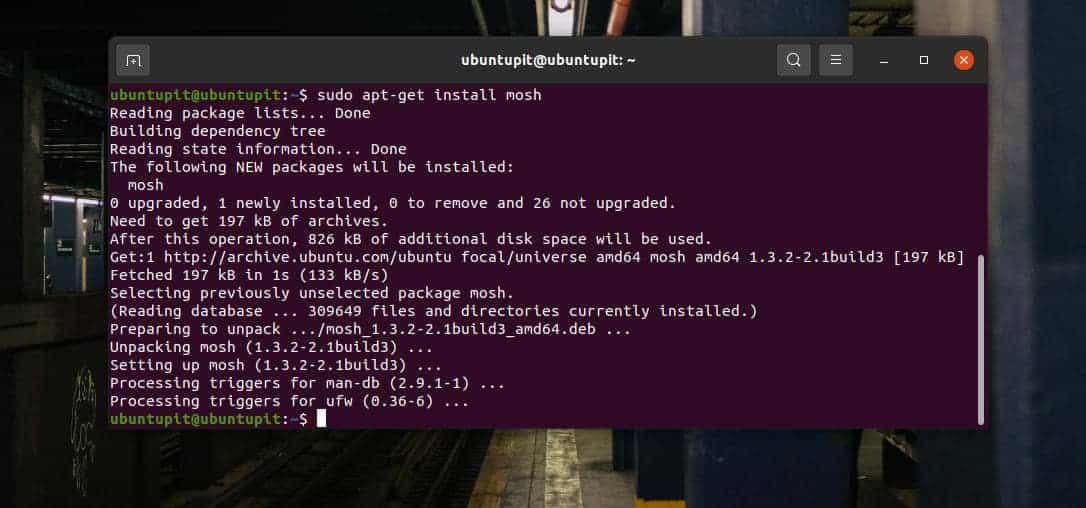

Whenever an SSH connection is broken, the user would need to manually tell SSH to negotiate a new secure channel.Īnd adding to the frustration, SSH does nothing to indicate to the user that a connection has turned stale until they attempt to enter a command. This is an acceptable limitation when working at school or an office but not in environments where the network connection is spotty or unreliable. SSH is outstanding at providing users a secure communication channel over an unsecured network - but it relies on a singular, unbroken connection (usually TCP) between client and server. It can be used any time there is a need to control a remote machine in a secure manner.Īmong its many common use cases, SSH can be used to delegate chunks of work from a relatively underpowered client (like a laptop computer) to a scalable, industry-grade machine (perhaps a VPS on Azure or DigitalOcean). Secure Shell (SSH) is an excellent and deeply-entrenched tool for remote development and system administration, especially on Unix-like operating systems. Protocols that must send every byte can’t do this.A Guide to Mosh | Al Idian Al Idian A Guide to Mosh That means Mosh can regulate the frames so as not to fill up network buffers, retaining the responsiveness of the connection and making sure Control-C always works quickly. The connection from server to client synchronizes an object that represent the current screen state, and the goal is always to convey the client to the most recent server-side state, possibly skipping intermediate frames.īecause SSP works at the object layer and can control the rate of synchronization (in other words, the frame rate), it does not need to send every byte it receives from the application. The connection from client to server synchronizes an object that represents the keys typed by the user, and with TCP-like semantics. Mosh runs two copies of SSP, one in each direction of the connection. While SSP takes care of the networking protocol, it is the implementation of the object being synchronized that defines the ultimate semantics of the protocol. Datagrams encrypted and authenticated using AES-128 in OCB3 mode. SSP runs over UDP, synchronizing the state of any object from one host to another. This accomplished using a new protocol called the State Synchronization Protocol, for which Mosh is the first application. The problem becomes one of state-synchronization: getting the client to the most recent server-side screen as efficiently as possible. With Mosh, the server and client both maintain a snapshot of the current screen state. (This includes TELNET, RLOGIN, and SSH.) Mosh works differently and at a different layer. Remote-shell protocols traditionally work by conveying a byte-stream from the server to the client, to_be interpreted by the client’s terminal. Instant keystroke response, robust to roaming.

#UBUNTU MOSH SERVER FREE#
Mosh is free software, available for GNU/Linux, BSD, macOS, Solaris, Android, Chrome, and iOS. It’s more robust and responsive, especially over Wi-Fi, cellular, and long-distance links. Mosh is a replacement for interactive SSH terminals. Remote terminal application that allows roaming, supports intermittent connectivity, and provides intelligent local echo and line editing of user keystrokes. The application is written originally by Keith Winstein for Unix like operating system and released under GNU GPL v3. It is an application similar to SSH, but with additional features. It canbe used as SSH and contains more feature than Secure Shell. Mosh, which stands for Mobile Shell is a command-line application which is used for connecting to the server from a client computer, over the Internet.


 0 kommentar(er)
0 kommentar(er)
